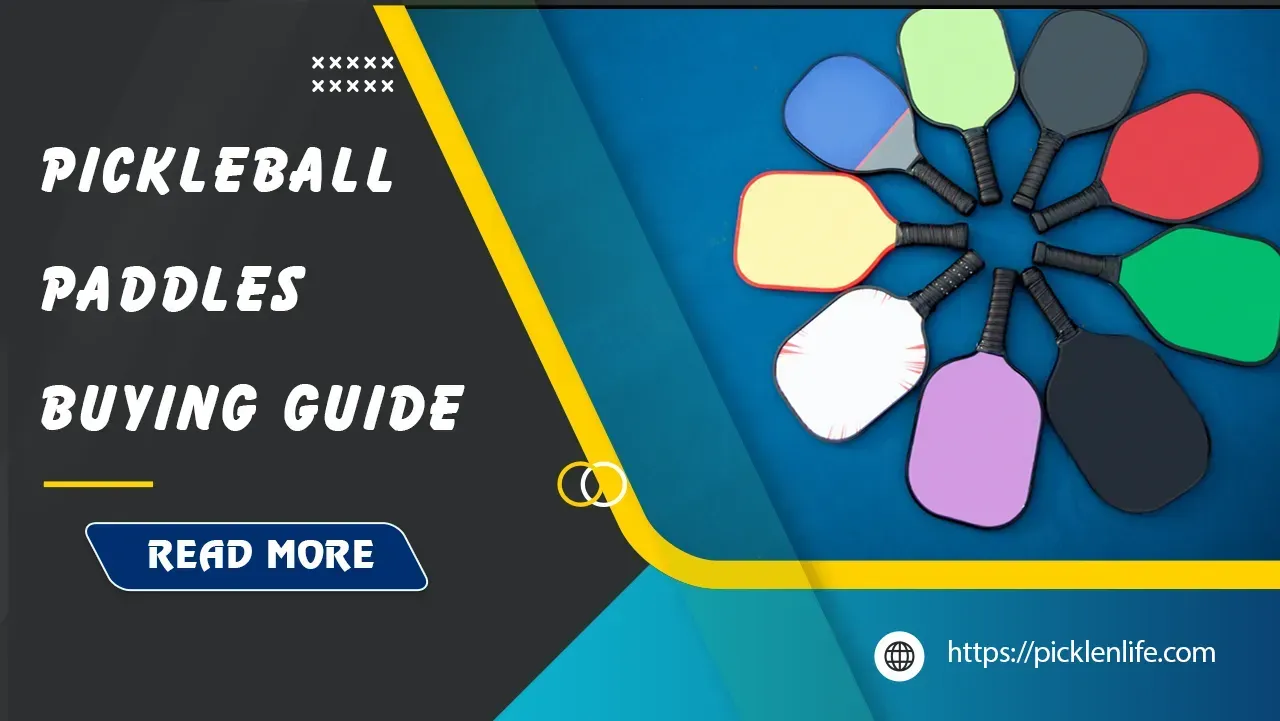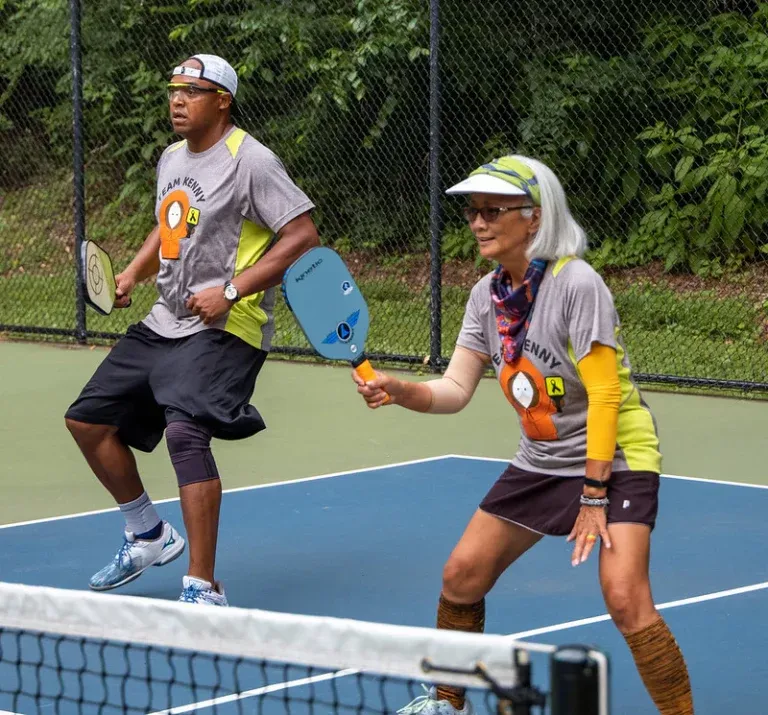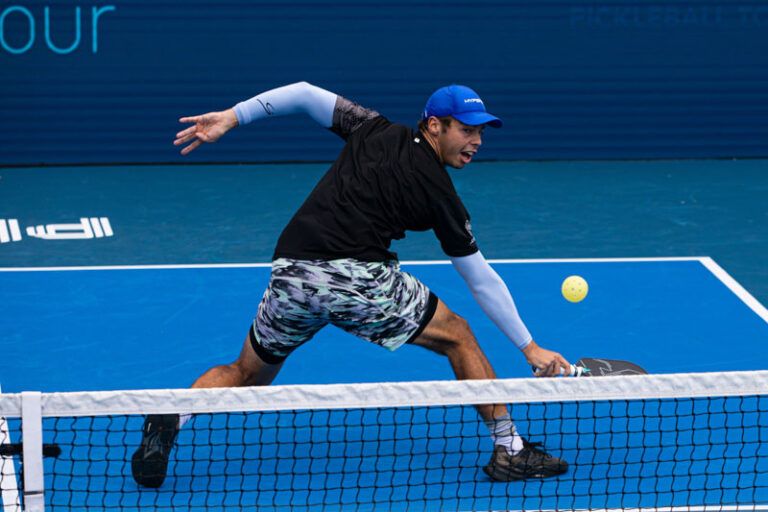Understanding pickleball paddle weight categories
In the world of pickleball, paddle weight is a crucial consideration for players seeking to elevate their performance. The differences between lightweight, midweight, and heavyweight paddles come down to subtle yet significant variations that can influence everything from swing speed to shot accuracy.
What defines a lightweight, midweight, or heavyweight paddle?
Paddle weight classification determines not only how a player hits the ball but also affects their overall game strategy. Understanding these classifications can help players choose the paddle that aligns with their skills and physical conditions.
- Lightweight paddles: Weighing less than 7.5 ounces, lightweight paddles are favored for their incredible maneuverability and control. Players who thrive on quick reactions and precision, especially at the kitchen line, will find that these paddles allow for rapid adaptations in gameplay. However, a trade-off exists: while they enhance control, they often generate less power.
- Midweight paddles: Ranging between 7.4 and 8.4 ounces, these paddles strike a balance between maneuverability and stability. They offer a blend of power and control, making them a go-to choice for many players who desire an optimal playing experience without excessively straining their arms.
- Heavyweight paddles: These paddles, which are generally over 8.4 ounces, provide an unmistakable advantage in terms of power. For experienced players who seek to drive the ball with force, the added mass helps absorb shock and offers a more stable striking surface. However, they require more strength to wield effectively, which can limit maneuverability.

Breaking down weight ranges and common classifications
| Paddle Type | Weight Range | Advantages | Disadvantages |
|---|---|---|---|
| Lightweight | Less than 7.5 ounces | Greater control and maneuverability | Less power; potential for arm fatigue |
| Midweight | 7.5 - 8.4 ounces | Balanced performance, offering both power and control | Might struggle with extreme power shots |
| Heavyweight | More than 8.4 ounces | Enhanced power and stability; shock absorption | Reduced maneuverability; may not suit all players |
By dissecting these categories, players can gain clarity about their equipment and make informed decisions that could significantly affect their games.
Power vs. control: Lightweight vs Heavyweight Pickleball Paddle
One of the most critical discussions surrounding paddle weight is the balancing act between power and control. Each type of paddle brings its advantages and limitations to the court, influencing how a player strikes the ball and, ultimately, the outcome of matches.

How paddle weight influences power generation and shot speed
The physics of paddle weight is fascinating; lighter paddles allow for quicker swings, granting players the ability to place shots with exact precision. However, this advantage often comes at the expense of raw power. With lighter paddles, players may need to exert more effort to generate force, which could inadvertently lead to quicker arm fatigue. The swings might feel like a gentle breeze, but the impact still needs to be substantial enough for competitive play.
In contrast, heavyweight paddles provide a solid wall of force. When you swing a heavier paddle, it resonates with a thud that can be quite satisfying for power hitters. The energy transfer is far more efficient, allowing players to achieve incredible shot speed with less physical exertion. However, the trade-off means sacrificing some finesse and delicate control, which can hinder accuracy, especially in tight matches.
The impact of weight on shot control, precision, and placement
Control and power are not simply two ends of a spectrum but rather interdependent variables shaping a player's performance. Lightweight paddles excel in delicate play; they allow for finesse shots, dinks, and sharp angles. This fine-tuned control proves advantageous during exchange moments, particularly in doubles matches where tactical gameplay reigns supreme.
Heavyweight paddles, however, deliver a sense of reliability in driving the ball deep into the opponent’s court. Yet, driving the ball doesn't always prove fruitful unless players have a firm grasp on precision. The increased weight can make it challenging to execute fine placements, meaning that mixing up your strategy is often necessary for optimal effectiveness.
To summarize, understanding how a paddle's weight affects power generation and control is a game-changer for aspiring players looking to enhance their strategy on the court.
Matching paddle weight to your unique playing style
Choosing the right paddle isn't merely about weight; it also speaks to a player’s individual style of play. Whether you approach the game as an aggressive hitter or a strategic finesse player, your paddle should serve as an extension of your playing philosophy.

Aggressive vs. finesse: selecting a paddle weight to suit your approach
Power hitters often gravitate towards heavier paddles that complement their aggressive play. When engaged in high-stakes rallies, the ability to drive the ball can change the tide of a game. Heavyweight paddles enable such players to strike with conviction, ensuring that each shot signifies dominance.
Conversely, finesse players may favor lightweight paddles that allow for a variety of tactical shots. With the blessing of quick maneuverability, they can develop a nuanced game, relying on strategic placement and soft touches to outwit opponents. The art of dinking, for instance, becomes more accessible with a lighter paddle, as players can utilize subtle wrist movements to control the ball's trajectory.
Weight considerations for doubles vs. singles
When contemplating paddle weight, the context of the game significantly matters. In singles matches, the court is larger, demanding players to cover more ground. Thus, maneuverability becomes paramount; lightweight paddles may shine in this scenario, allowing players to respond swiftly to the opponent’s shots.
In contrast, doubles matches often hinge on teamwork and strategy. Partners need to cover their respective areas, frequently engaging in quick exchanges at the kitchen line. Players may find heavier paddles to be beneficial, as the increased stability offers assurance during powerful volleys. That said, players should cultivate their own style, learning the intricacies of the game to determine their ideal paddle weight.
The importance of skill level in choosing the right paddle weight
Skill level plays an influential role when selecting the appropriate paddle weight, as players at different stages may require distinct equipment to optimize their performance.

Why lightweight paddles are often ideal for beginners
For newcomers to the game, lightweight paddles present a tempting option. Their effortless maneuverability allows for easier learning curves, letting beginners focus on developing skills without the burden of excessive weight. Being able to execute various shots without undue strain is critical during this phase of growth.
Moreover, lightweight paddles offer a greater opportunity for players to perfect their technique. As they learn essential shots and receive feedback, they can seamlessly transition into more advanced techniques while developing the muscle memory necessary for skill progression.
How intermediate and advanced players can benefit from heavier paddles
As players gain experience and strength, hefty paddles may become advantageous tools in their arsenal. Intermediate and advanced players who can deliver stronger swings stand to benefit from the stability and power offered by heavyweight paddles. With such gear, players can drive the ball with unmatched force, enhancing their competitive edge.
Heavy paddles also lend themselves well to specialized shots like powerful volleys and serves. The increased mass absorbs shock, reducing the risk of injury particularly helpful for those with existing elbow or wrist issues. Additionally, seasoned players who can command finesse shots can learn to use heavier paddles creatively, allowing them to control the ball more precisely, blending power with skill.
Durability, materials, and the lifespan of your paddle
Paddle material and durability go hand in hand with weight categories. As players seek optimal performance, understanding the composite materials and their longevity becomes essential.
Common materials used in lightweight and heavyweight paddles
Different materials yield unique properties in paddles, influencing their performance and durability. Options include:
- Graphite paddles: Lightweight and robust, graphite paddles are often favored for their excellent feel and touch.
- Composite paddles: A blend of graphite and polymer or fiberglass, these paddles strike a balance between price and performance.
- Nomex core: Known for durability and powerful shots, Nomex cores are common in heavyweight paddles.
- Aluminum core: These paddles are durable but frequently offer more weight than players may want.
Understanding these options allows players to choose a paddle reflecting their needs and playing style.
How material choice and weight affect durability and longevity
Weight considerations affect not merely performance but also durability. Heavier paddles often use sturdier materials, thus exhibiting a longer lifespan. Despite this, lighter paddles incorporated with high-quality composites can also endure wear and tear, making them viable for competitive play.
Players must also be mindful of their playing habits, as aggressive plays can quickly wear down paddles. Maintenance, such as consistent cleaning and proper storage, contributes significantly to a paddle's longevity.
Comfort, fatigue, and the impact of paddle weight on your body
The physical toll of paddle weight on a player’s body cannot be neglected. Selecting the appropriate paddle is essential for ensuring comfort and reducing injury risks.
How paddle weight can contribute to arm strain, fatigue, and injury
Heavy paddles exert noticeable strain on the arm, especially during intense rallies. Players who choose a paddle that isn’t suited to their strength can develop fatigue swiftly, potentially even leading to injuries such as tennis elbow. When the body is overworked, the risk of long-term issues grows significantly.
Weight plays a crucial part, as outdated equipment can no longer support the body's needs. Therefore, finding a paddle that aligns with both skill and physical conditioning proves crucial to promoting longevity within the sport.
The significance of grip size and circumference
Beyond weight, grip size plays an integral role in enhancing comfort and control. Players must consider their hand size for optimal grip. The wrong fit can lead to unnecessary strain, impacting performance and effectiveness during play.
A proper grip size not only adds to comfort but also affects control: players feeling secured are more inclined to make precise shots. Exploring grip size charts can aid in determining the optimal choice, ensuring that paddles best suit individual requirements.
Tips for preventing and managing pickleball-related injuries
Some preventative strategies for injury management include:
- Stretching exercises: Incorporate routine stretching to enhance flexibility and promote recovery.
- Proper technique: Focus on mastering fundamental techniques to minimize risk during play.
- Warm-up routines: Designing focused warm-ups can condition the muscles for the demands of pickleball.
By implementing these practices, players can mitigate the physical impact of paddle weight on their bodies, fostering a healthier playing experience.
The influence of paddle weight on specific shots and techniques
Different paddle weights bring a distinct flavor to various shots, affecting player techniques and styles on the court.
Dinking, volleying, driving: how paddle weight changes the game
The nuanced art of dinking requires a soft touch the player's finesse shines with lighter paddles, emphasizing delicate placements. Agile movements are easily facilitated, allowing players to control their shots and pressure their opponents through strategic plays.
On the other hand, driving demands greater mass behind the shot. Heavy paddles allow players to punch the ball securely across the net, giving them impressive ball speed and depth. As players learn different techniques, understanding how paddle weight influences performance becomes critical to mastering the game.
Understanding the relationship between weight, spin, and control
Spin adds another layer of complexity to gameplay. Finding the right balance between weight and spin can enhance a player’s ability to control the ball. Lightweight paddles lend themselves effectively to delivering more spin on soft shots, enabling enhanced trajectory. Conversely, heavier paddles require more technique when applying spin but result in controlled power during driven shots.
Striking the ideal balance is essential, allowing players to adapt and evolve their skills as they progress through their pickleball journey.
Debunking myths and misconceptions about paddle weight
Rumors and misconceptions about paddle weight can adversely affect players' decisions, leading to confusion when selecting equipment.
Can lightweight paddles generate enough power for competitive play?
The belief that lightweight paddles lack the power for competitive play has some merit, but modern technologies have transformed this arena. Developments in paddle technology have allowed lightweight paddles to incorporate innovative materials and designs to enhance their hitting power. Players can achieve impressive results during competitive gameplay despite the reduced weight.
More seasoned players often rely on their swing speed and technique to generate additional force, so skill is often more important than outright power generation.
Do heavyweight paddles limit control and finesse shots?
Another common misconception is that heavier paddles inhibit control and finesse. While it’s true that heavier paddles might limit some movements, savvy players can utilize proper techniques to execute soft shots successfully. Being able to master the combination of weight, balance, and finesse is what sets advanced players apart.
By understanding these myths and equipping themselves with the facts, players can make more informed decisions and enhance their overall performance on the court.
Paddle weight and sound: a unique factor to consider
While the primary focus is often on gameplay, the sound produced by a paddle can also affect the player’s experience.
The science of sound and vibration in pickleball paddles
The materials used in paddle construction influence not only performance but also auditory characteristics. Sound physics play a role in how players perceive the impact upon hitting the ball the sound can range from a satisfying pop to a dull thud, influencing a player's enjoyment of the game.
Advanced paddle technology ensures that vibrations are minimized, which can heighten focus and reduce discomfort during play.
How paddle sound can influence gameplay and player perception
Players often develop preferences for the sounds associated with their equipment. A satisfying sound creates a positive psychological relationship with gameplay, increasing motivation and enjoyment on the court. This can translate to heightened performance, as players become more attuned to their shots through auditory feedback.
By considering the nuances of sound and vibration, players can potentially enhance their gameplay experiences.
Transitioning between paddle weights: when and why it matters
In a player's journey, it’s essential to recognize that growth necessitates change. A shift in paddle weight can often lead to more refined gameplay.
Recognizing the signs that it might be time to change paddle weight
Whether due to evolving skills or recovery from injury, several signs indicate that it's best to transition to a different paddle weight:
- Skill progression: As players master their techniques, a heavier paddle could afford them increased stability and power.
- Changing playing style: If players shift from aggressive play to a finesse-based approach, a lightweight paddle may better complement their game.
- Injury recovery: Those rehabilitating from injuries should evaluate their equipment's impact on their recovery and consider lighter alternatives.
Tips for adjusting to a new paddle weight and optimizing your game
Transitioning between paddle weights can improve overall performance, but gradual adjustment is key. Here are several tips:
- Practice drills: Spend time working on basic motions to adapt the new paddle weight effectively.
- Muscle adaptation: Allow your body time to adjust to new movements, building strength and coordination gradually.
- Adjusting grip: Examine how changing paddle weight influences your grip and tweak accordingly to ensure maximum comfort and control.
By approaching paddle weight changes thoughtfully, players can effectively enhance their skills and vary their equipment to suit their game.
Conclusion
Choosing between lightweight and heavyweight pickleball paddles isn't just a matter of preference; it is an intricate dance of understanding power, control, playing style, and one's physical capabilities. As you navigate this dynamic sport, allow your paddle to be a true extension of your abilities, reflecting who you are as a player. By thoughtfully considering weight alongside your gameplay needs, you'll unlock an enriched experience filled with excitement, growth, and victories along the way. Embrace the journey, experiment, and most importantly, enjoy every rally as you carve your niche in the vibrant world of pickleball!










